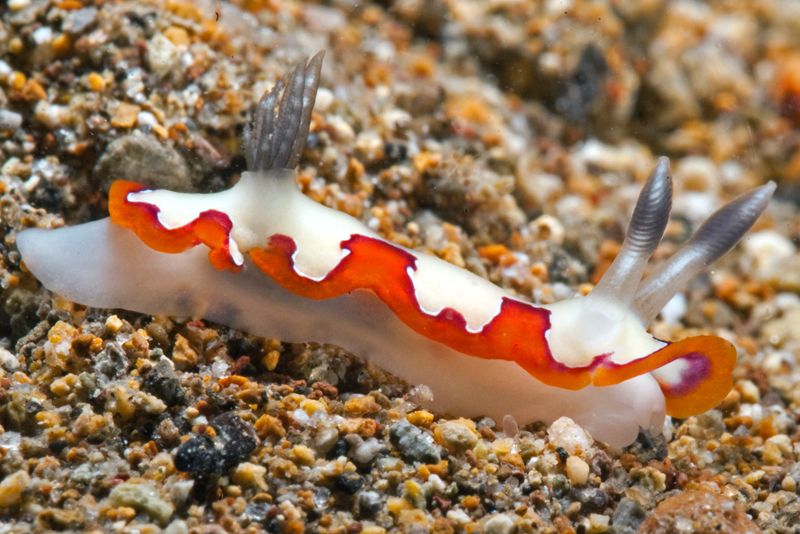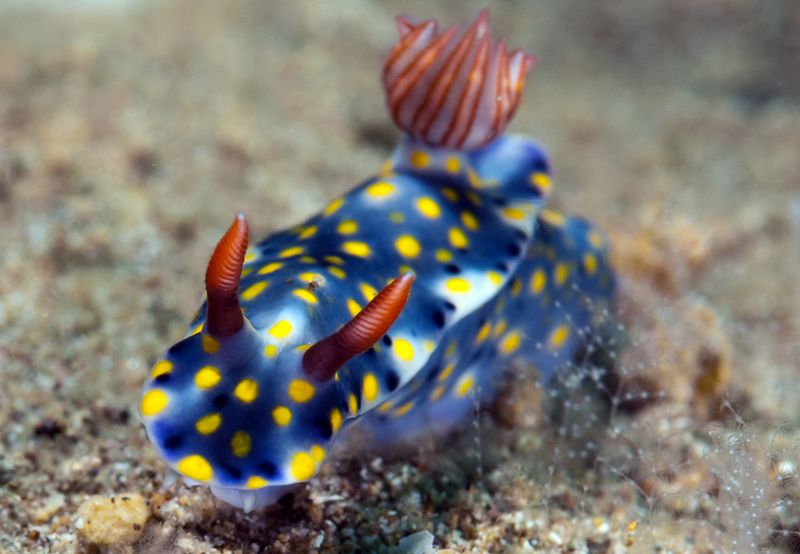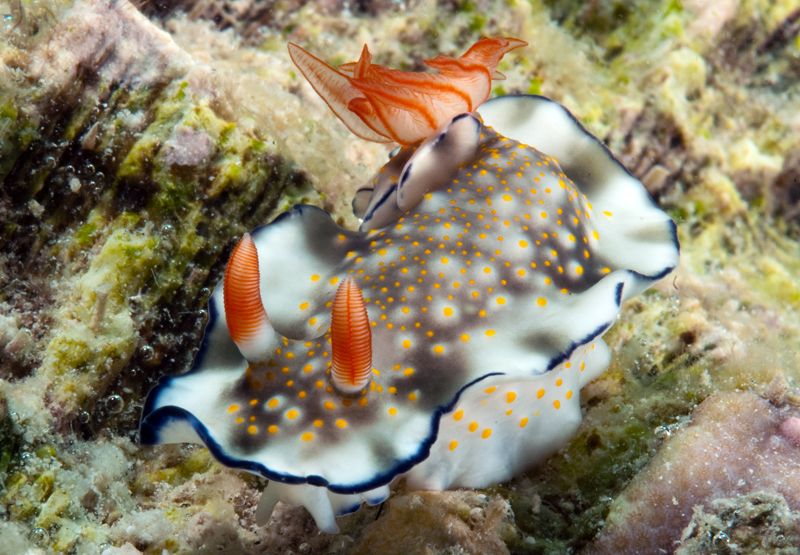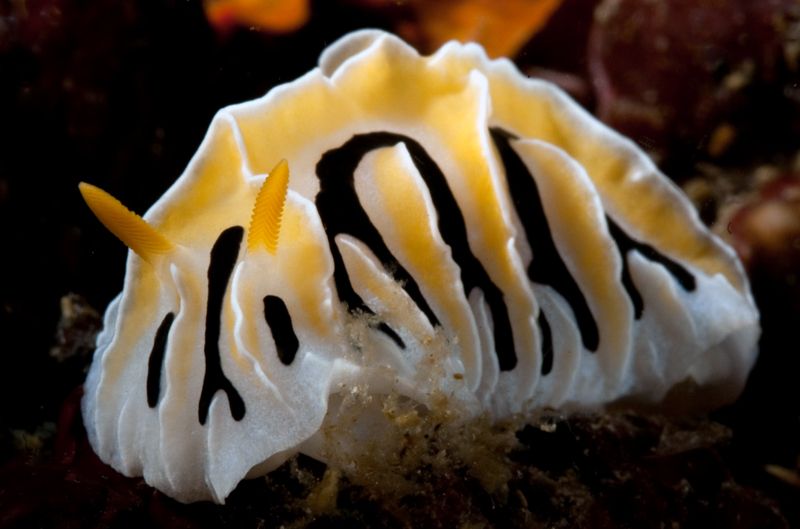DIVE DRY WITH DR. BILL #646: RARITY
I've written a number of times about those who seek out rarity vs biologists like myself who encompass even the commonplace in their studies. Now I'll admit that I've spent as lot of my life looking for a certain form of rarity, the amphibious mermaid. NOAA has said they don't exist, but I've never given up hope. Call me the eternal optimist... or fool if you so desire. I still keep looking.
I worked for several winters aboard Lindblad Expeditions eco-cruise ships in the Sea of Cortez, Pacific Coast of Baja, Belize and Honduras. Many of our passengers were avid birders with long life lists of the unusual avian species they had recorded. Some of them reminded me of the collector mentality, one who keeps adding to the number of species often without really knowing much about each one. Others were truly interested in the habits of each and could spend hours observing a single species. I tried, usually without success, to get them to throw away their binoculars and spend time looking at my plankton samples through the microscope. After all, plankton are probably far more critical to life on earth than a silly bird since they are the base of many food chains and provide us with oxygen that makes our atmosphere breathable. How many feathered freaks can do that?
The collector mentality isn't restricted to terrestrial birders. I've encountered it with entomologists who fancy "bugs" (more appropriately known as insects) and even SCUBA divers. My submarine "soul mates" often focus on the group of shell-less snails known as naked gills... or, scientifically, as nudibranchs. No, they aren't focused on the exposed gills of these critters, but on the often beautiful coloration that makes them splendid photographic subjects (similar to many birds). While they are focused on finding the most beautiful slugs they can, I am off filming the far more common gorgonians, coral, kelp or crabs. But every once in a while I stop to smell the roses.
Recently Angela from SCUBA Luv encountered one of the less common 'branchs in our waters, Mulliner's dorid (Peltodoris mullineri). Back when I started diving Catalina waters in the late 1960s, this slug actually had no accepted scientific or common name. Even in the 1980 edition of Behren's Pacific Coast Nudibranchs it was described as an unnamed species of Peltodoris. It wasn't until the year 2000 that Hans Bertsch and Sandra Millen gave it its current scientific name. It was in honor of David Mulliner who Bertsch described as "Sea Hunt before Lloyd Bridges." Mulliner has been diving and photographing nudis for decades. Bertsch is quoted in the Christian Science Monitor as saying "If you study birds, you're lucky to find a subspecies, but we're finding new things all the time." He has named more than 30 species of nudibranchs.
P. mullineri is known from Santa Barbara and Anacapa Islands to Cabo San Lucas at the tip of Baja. It has a yellow to golden orange background color with brown blotches. The sensory rhinophores at the front and the cluster of retractable gills at the rear are both of the body's background color. Its maximum length is about 2 3/4 inches (70 mm).
Bertsch states that the food of this species is unknown. I've never found it feeding so I can't add to that, although I have suspected it may have a taste for sponges like some other members of the genus... watch out, Sponge Bob. In researching this column, I did find that Behrens and Hermosillo in their current guide to the slugs state that is the case. I was shocked when I clicked on the link to one scientific site (the Marine Biology resource network) and was presented images of lovely Asian women but none of P. mullineri... so I added one of mine to the page describing it. Perhaps the ladies were examples of the mermaids I seek?
You all know that munching is one of my favorite topics, both personally and with respect to the critters I write about. We all need to ensure our continued existence as individuals. The other focus of my work (but not my life, sigh) is mating. Every species needs to ensure it reproduces and thereby hopefully escapes extinction. Now I have filmed P. mullineri mating on at least one occasion, but I really don't have a lot to say about it. Like most nudibranchs, it is a hermaphrodite and has both male and female sex organs. Strangely, one source stated the individual they observed had been "unsexed." As for the gory details of this species' love life, I could find little to titillate my readers with. Sorry.
© 2015 Dr. Bill Bushing. For the entire archived set of over 650 "Dive Dry" columns, visut my website Star Thrower Educational Multimedia (S.T.E.M.) Home Page
Image caption: The finally named Peltodoris mullineri including one in the hand of the good Doctor (worth two on the reef).
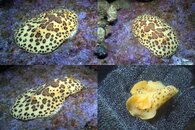
I've written a number of times about those who seek out rarity vs biologists like myself who encompass even the commonplace in their studies. Now I'll admit that I've spent as lot of my life looking for a certain form of rarity, the amphibious mermaid. NOAA has said they don't exist, but I've never given up hope. Call me the eternal optimist... or fool if you so desire. I still keep looking.
I worked for several winters aboard Lindblad Expeditions eco-cruise ships in the Sea of Cortez, Pacific Coast of Baja, Belize and Honduras. Many of our passengers were avid birders with long life lists of the unusual avian species they had recorded. Some of them reminded me of the collector mentality, one who keeps adding to the number of species often without really knowing much about each one. Others were truly interested in the habits of each and could spend hours observing a single species. I tried, usually without success, to get them to throw away their binoculars and spend time looking at my plankton samples through the microscope. After all, plankton are probably far more critical to life on earth than a silly bird since they are the base of many food chains and provide us with oxygen that makes our atmosphere breathable. How many feathered freaks can do that?
The collector mentality isn't restricted to terrestrial birders. I've encountered it with entomologists who fancy "bugs" (more appropriately known as insects) and even SCUBA divers. My submarine "soul mates" often focus on the group of shell-less snails known as naked gills... or, scientifically, as nudibranchs. No, they aren't focused on the exposed gills of these critters, but on the often beautiful coloration that makes them splendid photographic subjects (similar to many birds). While they are focused on finding the most beautiful slugs they can, I am off filming the far more common gorgonians, coral, kelp or crabs. But every once in a while I stop to smell the roses.
Recently Angela from SCUBA Luv encountered one of the less common 'branchs in our waters, Mulliner's dorid (Peltodoris mullineri). Back when I started diving Catalina waters in the late 1960s, this slug actually had no accepted scientific or common name. Even in the 1980 edition of Behren's Pacific Coast Nudibranchs it was described as an unnamed species of Peltodoris. It wasn't until the year 2000 that Hans Bertsch and Sandra Millen gave it its current scientific name. It was in honor of David Mulliner who Bertsch described as "Sea Hunt before Lloyd Bridges." Mulliner has been diving and photographing nudis for decades. Bertsch is quoted in the Christian Science Monitor as saying "If you study birds, you're lucky to find a subspecies, but we're finding new things all the time." He has named more than 30 species of nudibranchs.
P. mullineri is known from Santa Barbara and Anacapa Islands to Cabo San Lucas at the tip of Baja. It has a yellow to golden orange background color with brown blotches. The sensory rhinophores at the front and the cluster of retractable gills at the rear are both of the body's background color. Its maximum length is about 2 3/4 inches (70 mm).
Bertsch states that the food of this species is unknown. I've never found it feeding so I can't add to that, although I have suspected it may have a taste for sponges like some other members of the genus... watch out, Sponge Bob. In researching this column, I did find that Behrens and Hermosillo in their current guide to the slugs state that is the case. I was shocked when I clicked on the link to one scientific site (the Marine Biology resource network) and was presented images of lovely Asian women but none of P. mullineri... so I added one of mine to the page describing it. Perhaps the ladies were examples of the mermaids I seek?
You all know that munching is one of my favorite topics, both personally and with respect to the critters I write about. We all need to ensure our continued existence as individuals. The other focus of my work (but not my life, sigh) is mating. Every species needs to ensure it reproduces and thereby hopefully escapes extinction. Now I have filmed P. mullineri mating on at least one occasion, but I really don't have a lot to say about it. Like most nudibranchs, it is a hermaphrodite and has both male and female sex organs. Strangely, one source stated the individual they observed had been "unsexed." As for the gory details of this species' love life, I could find little to titillate my readers with. Sorry.
© 2015 Dr. Bill Bushing. For the entire archived set of over 650 "Dive Dry" columns, visut my website Star Thrower Educational Multimedia (S.T.E.M.) Home Page
Image caption: The finally named Peltodoris mullineri including one in the hand of the good Doctor (worth two on the reef).






